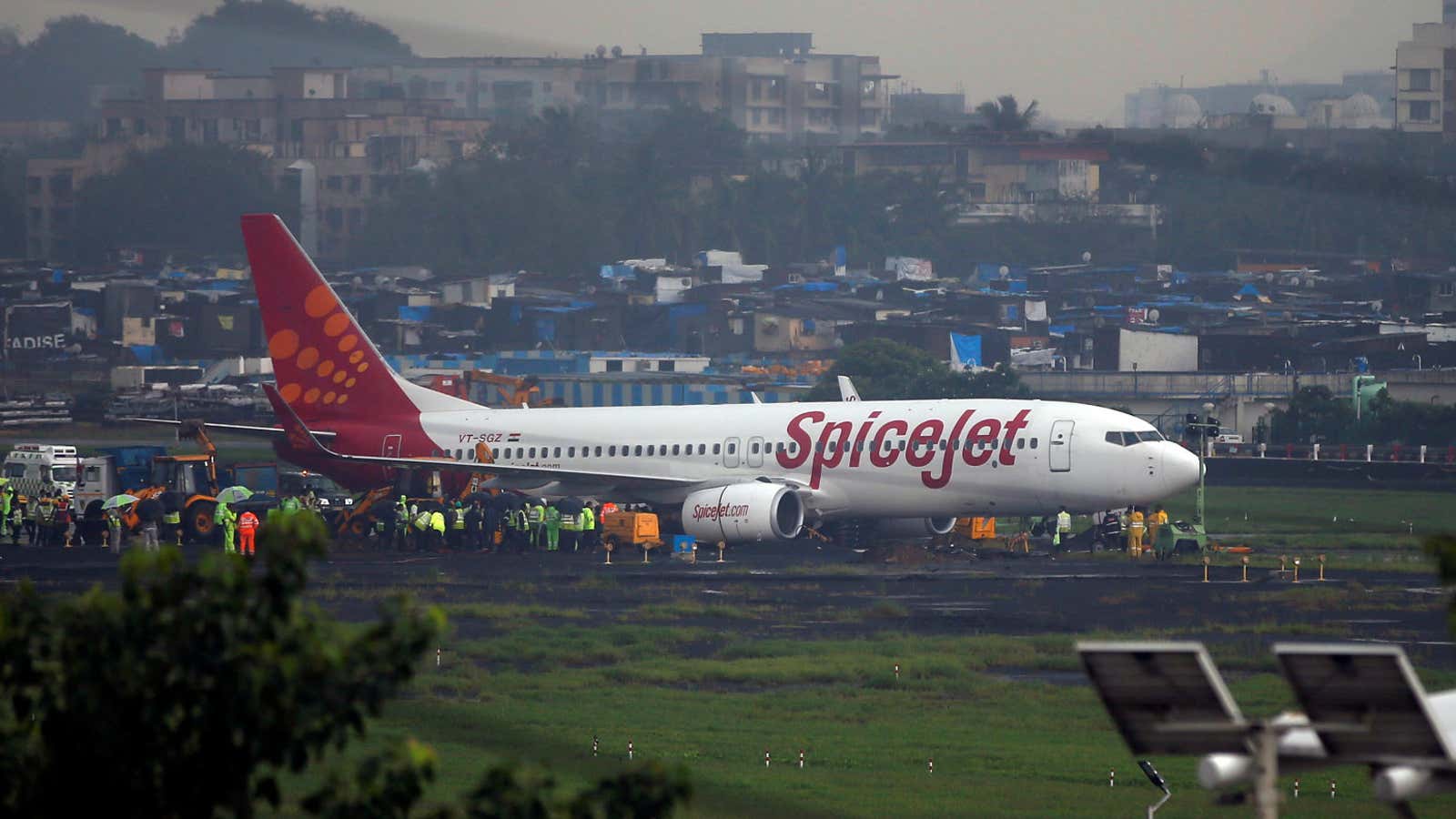For long, India’s airlines have waged a ruinous price war. Now, faced with a massive financial mess, wisdom may have finally dawned upon some in the sector.
For one, no-frills private carrier SpiceJet is passing on costs to passengers—and already reaping the benefits.
Following two consecutive quarters in the red, India’s fourth-largest airline by market share in 2018, reported a standalone net profit of Rs55 crore ($7.7 million) for the final three months of last year, it announced on Feb. 11. Revenues, too, were up 20% year-on-year to Rs2,530 crore in the third quarter of financial year 2019.
However, profits were still 77% lower than the Rs250 crore registered in October-December 2017, which took much of the sheen away from the earnings. The airline attributed the plunge to the double whammy of crude oil prices (34% higher than in the year-ago period) and the rupee (11% weaker against the dollar), which took a combined toll of Rs329 crore in the third quarter, the airline said.
The wafer-thin profits notwithstanding, there were a host of vitals that the airline can still take heart from.
Green shoots
Passenger yields in the quarter were up 8% from a year ago, SpiceJet said in its statement. An airline’s yield is a measure of the average fare a passenger pays to fly one mile and is an important gauge of the change in fares over time. SpiceJet also said that average fares were up 25%, compared to the July-September quarter.
Over the years, the dirt cheap travel fares have played havoc with airlines’ balance sheets as the resultant traffic and travel boom didn’t really translate into profits.
The July-September quarter, for instance, was a washout. India’s largest airline IndiGo posted a loss of Rs652 crore—its first loss since listing three years ago. SpiceJet lost Rs389 crore, while the embattled private carrier, Jet Airways, ended up losing Rs1,297 crore. Yet, domestic air traffic grew by 21% in the nine months till September.
The airlines’ dire situation triggered gloomy forecasts. In a report dated Nov. 01, 2018, ratings agency Crisil had forecast that the companies would post their steepest losses in a decade this financial year. Crisil recommended a 12% fare hike to offset the higher fuel prices, which, it estimated, accounted for up to 40% of an airline’s costs.
And SpiceJet may have done just that.
The airline’s ability to pass on higher fuel and forex costs, which reflected as higher passenger yields, staved off another slide into the red. “Despite the huge cost escalation in ATF (aviation turbine fuel) and exchange rate, SpiceJet has done remarkably well thanks to our superior revenue performance,” said chairman and managing director Ajay Singh in a statement announcing the results.
Singh, who engineered a turnaround at SpiceJet after its near brush with death in 2014, added that the airline is also keeping a tight lid on costs and expanding to new routes.
Positive outlook
SpiceJet said it has inducted 12 new planes in the quarter, taking its fleet size to 74. This includes nine of Boeing’s fuel-efficient 737 MAX 8 aircraft and three Bombardier Q400s. “The new generation 737MAX aircraft with its cost efficiencies and increased revenue opportunities (due to superior payload performance) will become a substantial portion of our Boeing fleet further improving our margins. The increased seating capacity on the Bombardier Q400s will also result in improved margins,” Singh said.
The fleet efficiencies might aid the airline’s bid to find and fly routes where the competition is less. Late last month, SpiceJet won rights to fly in 36 new sectors under UDAN—India’s regional air connectivity scheme.
Last month, India’s largest carrier IndiGo, too, had announced a modest profit of Rs191 crore for the October-December period. Now with SpiceJet’s positive earnings, India’s airlines may still have a fair chance to disprove the dismal earnings forecasts for the ongoing fiscal.
